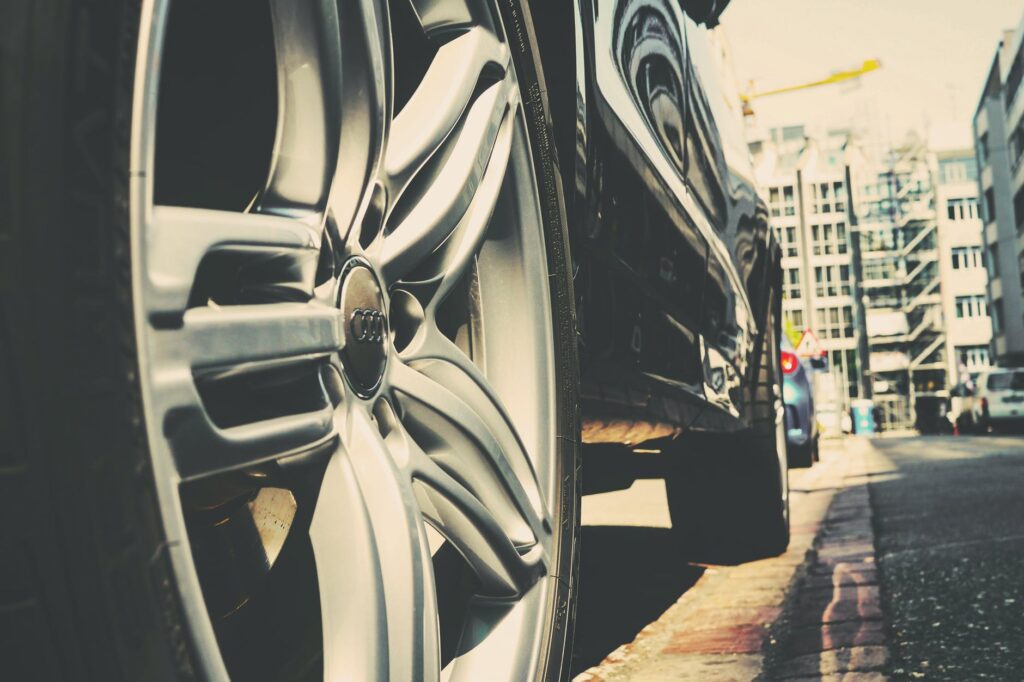Wheel alignment is fundamental for car enthusiasts. Proceeding down this road, camber is one major aspect of it, along with the toe and caster. Camber is the outwards or inwards tilt of a vehicle when viewed from the front.
Camber wears the tire, but only to an extent as small as the regular wear. However, with extreme negative or positive camber, you might have an unwanted meetup with intense, uneven wear.
Not only this, but it also tempers with the stability, cornering, and handling of the car. But most importantly, you will shoot for the stars with your car, thanks to every little bump on the road.

How Much Camber Is Safe for Tread Wear?
Tire tilted inwards will have a negative camber whereas, if tilted outwards, it will have positive camber. As far as the camber angle is concerned, it relies on the type and state of the vehicle you have and the way you drive.
Impaired handling, uneven tire wear, and vibrating steering wheel all indicate improper alignment. For typical car drivers the general camber angle is negative: between -1 and -2. This stance stands for aggressive drivers, as it improves handling and it ensures that the contact patch of the tire is even.
However, in the case of positive camber, normal drivers should mostly aim for 0-1°. Such small amounts of camber does cause slight uneven wear but the increase in performance is a merry trade-off in this case.
Sometimes, this value is increased up to 5° for specific applications. Positive camber adds stability to the car when traveling straight and curtails steering effort. This is mostly used in agricultural vehicles or off-road companions.
How does camber cause tire wear?
Camber specifically causes uneven tire wear and the mechanism is fairly obvious for that. Due to a greater contact with the road on one side, that side tends to wear out prematurely in comparison to the other. Inner sided wear of tires is typically associated with camber.
Other causes of tread wear:
When your tire passes away quicker than expected, the camber might not be the only culprit. Contrary to that, there can be several other causes, many of them far more effective in tread wear than camber.
1. Toe Alignment:
Toe alignment is the extent to which tires turn inward or outward when viewed from above. The amount of toe is expressed in degrees as the angle to which the wheels are out of the parallel. A poor toe alignment is much more sensitive to cause tread wear than any other wheel alignment.
Both high camber angle and too much toe can cause the car to use more fuel because the engine will need to exert more force when driving in a straight line. Moreover, a maladjusted toe alignment can result in intense wear of the tires, shortening the tread life drastically.
Improper toe alignment could also be the reason why your rear tires are wearing out much faster.
2. Caster:
The caster angle is another aspect of wheel alignment. It is determined by the steering axis, and whether its slope is forward or backward. Caster itself is not known to contribute to tire wear. However, the misalignment of the caster along with other tire alignments can result in an extended amount of wear. For example, in the case of too much positive or negative caster, even if the toe alignment is suitable, it will still result in excessive wear.
3. Tire Imbalance:
Tires can become unbalanced if the weight of any of the four tires isn’t uniformly distributed. The tire tread will wear out more quickly and unevenly while causing suspension and steering problems. When the vehicle is used regularly, it is more likely to occur. It is advisable to get tires checked after around every 10,000 miles.
4. Over/Under Inflated Tires:
Overinflation causes wearing in the center of the tread pattern because high air pressure causes the contact area to shrink. Therefore, the center of the tire has to carry the entire load. This will cause the tires to undergo uneven and exaggerated wear.
On the other hand, tread wear on the edges of a tire indicates under-inflation. When a tire has low air pressure, the contact area increases, and the load is carried by the outside edges of the tire.
Tires That Resist Wear Due to Camber
Nevertheless, if everything is at an optimum level, there are special tires that can resist tread wear. Radial tires are significantly more resistant to tread wear than other tires because their tire belt to radial body stiffness ratio is high.
If you are interested in buying a tire that has a long tread life and provides considerable protection against camber, consider Nitto Neo Gen AS- 205.
Nitto Neo Gen All Season Radial Tire-205/45R16XL 87V
It has the ability to resist uneven wear due to camber, yes it does…
Nitto Neo Gen Radial 205 has a large outer shoulder and flexible sidewalls with rigid tread. These traits result in extended tread life and also good traction while cornering.
The inner shoulder is also designed as a continuous block which adds to stability. These tires are designed to combat camber misalignments, by maintaining even tread wear.
The continuous inner shoulder substantially reduced wear. Apart from this, being all-season tires they can relieve you from the tedious job of changing tires every season.
And as a cherry on top, they provide exceptional wet traction and incredibly reduced hydroplaning. This tire has also been features in our article Best Tires for Lowered Cars.
For a complete list of tires suited to negative camber setups, head out to our article: Best Tires for Negative Camber.

